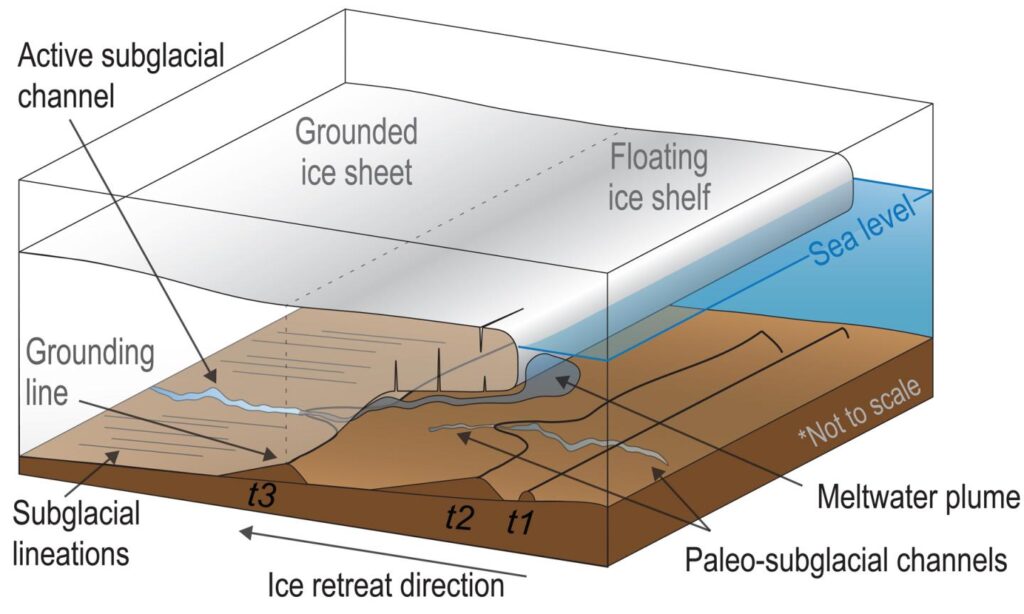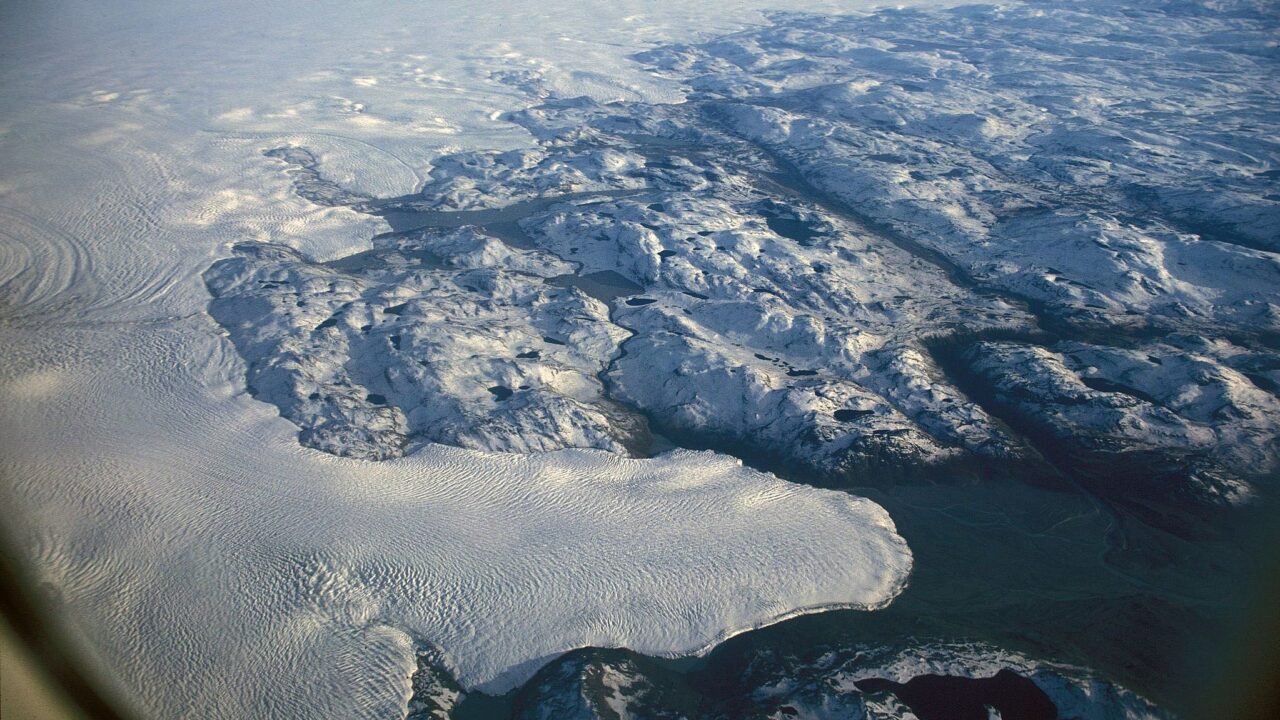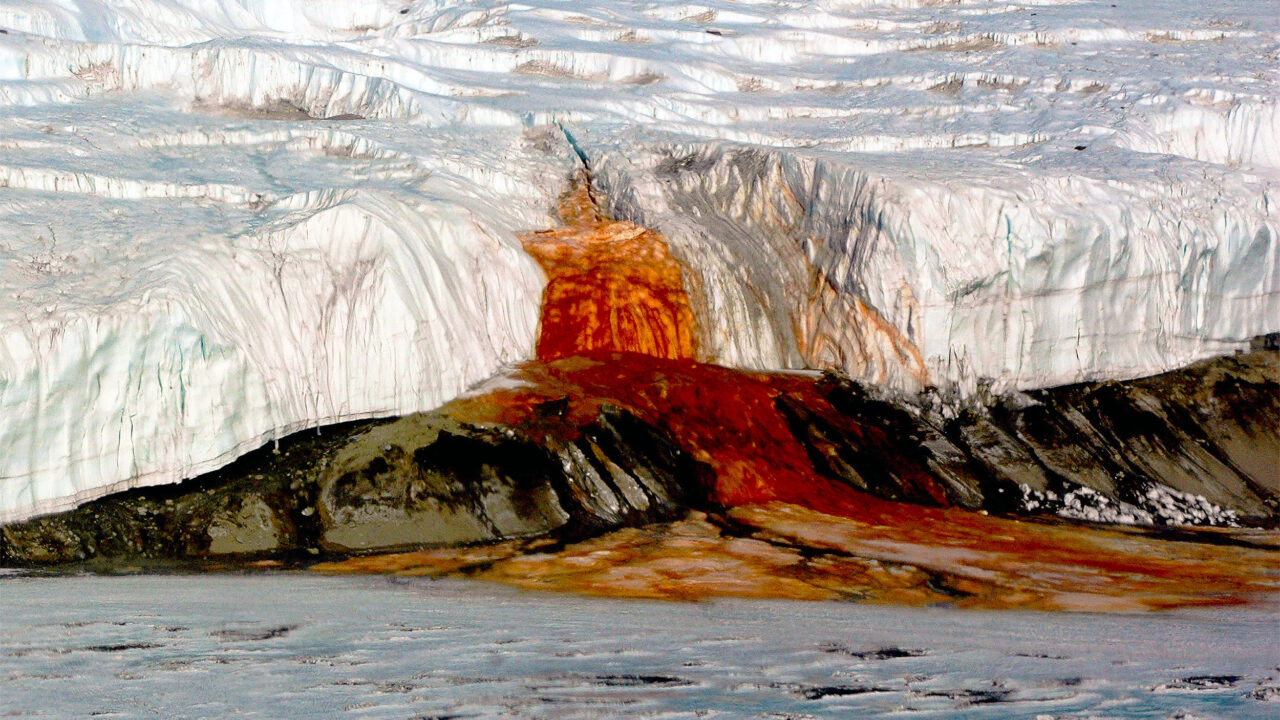Antarctica is one of the most extreme environments on Earth, yet beneath its frozen surface lies a hidden world full of surprises. Scientists have recently uncovered remarkable processes that challenge our usual understanding of ice and water. Beneath massive ice shelves, warm ocean water flows like rivers, melting the ice from below, while strange ecosystems cling to the underside of the ice in complete darkness. These phenomena are collectively referred to as “upside-down ice” a striking reversal of how we normally imagine the frozen landscape.
What Does “Upside-Down Ice” Mean?
“Upside-down ice” refers to situations where the normal relationship between ice and water is inverted. Instead of ice floating on top of water and melting from above, warm ocean currents flow underneath the ice, carving channels and reshaping the base of ice shelves.
This process also includes biological phenomena, where organisms live attached to the underside of the ice, forming an ecosystem in darkness an “upside-down” version of life as we know it.
Hidden Rivers Beneath Ice Shelves
Recent research revealed that “upside-down rivers” of warm water flow beneath the floating ice shelves of Antarctica. These rivers are responsible for melting ice from below, creating deep channels known as basal troughs.
Key Facts
- These under-ice rivers can stretch for kilometers and be hundreds of meters deep or wide.
- They often form along weak areas of the ice, such as shear zones, and accelerate the melting process.
- Studies beneath the Thwaites Ice Shelf and other West Antarctic regions show that relatively warm, salty ocean water seeps under the ice, driving internal melting.
Why It Matters
These hidden rivers weaken the ice shelves that act as natural barriers holding back the vast Antarctic glaciers. When the underside melts faster, the ice shelves lose strength, allowing inland glaciers to flow more rapidly into the ocean. This process contributes directly to global sea-level rise and poses a significant risk to future climate stability.
Under-Ice Ecosystems: Life in Total Darkness
Another astonishing discovery under Antarctic ice involves the ecosystems living on the underside of ice shelves.
Scientists drilling through hundreds of meters of ice have found marine organisms, such as sea anemones and filter feeders, living upside-down, attached to the ice’s bottom surface.
Highlights
- These communities survive without sunlight, relying on organic matter carried by ocean currents for nutrition.
- Researchers describe this region as an “upside-down world” where the sea floor becomes the ceiling.
- The discovery challenges previous assumptions that life could not exist in such dark, isolated environments.
Scientific Significance
These under-ice ecosystems provide new insights into how life can adapt to extreme conditions. They also help scientists understand how marine organisms might survive beneath icy moons like Europa and Enceladus, where similar conditions may exist.
Implications for Climate and Ice Stability
The discovery of upside-down ice processes is critical for understanding global climate dynamics.
Traditional models often focus on surface melting caused by rising air temperatures, but these sub-surface processes show that ice loss from below can be equally, if not more, important.
- Melting beneath ice shelves weakens them faster than previously estimated.
- If large ice shelves collapse, glaciers that sit on land can slide into the sea more rapidly, raising global sea levels.
- Monitoring under-ice melting is now a major focus of Antarctic research.

How Scientists Study the Hidden Underside of Ice
Researching the underside of Antarctic ice shelves requires advanced technology and precision.
Scientists use several methods to study this hidden world:
- Radar imaging and satellite data to detect changes in ice surface height caused by melting below.
- Hot-water drilling systems that create boreholes hundreds of meters deep to deploy sensors and cameras.
- Autonomous underwater vehicles (AUVs) and remotely operated vehicles (ROVs) that explore and map the under-ice terrain.
These tools allow scientists to gather critical data about the rate of melting, the temperature of ocean water beneath the ice, and the biological activity in these hidden regions.
Case Study: The Thwaites Glacier
The Thwaites Glacier, often called the “Doomsday Glacier,” is one of the most studied regions in Antarctica because of its potential impact on sea-level rise.
Recent studies show that warm water flowing underneath the glacier’s ice shelf is melting it from below, creating upside-down channels that extend far inland.
If Thwaites were to collapse entirely, global sea levels could rise by more than three meters, highlighting the urgent need for continued monitoring and climate mitigation.
The Bigger Picture
The concept of “upside-down ice” changes how scientists view the Antarctic environment. It reminds us that the most significant changes on our planet can occur out of sight, beneath the surface. Understanding how warm ocean currents interact with the ice sheet’s base is essential to predicting future climate impacts and protecting our coastal cities from rising seas.
The upside-down ice phenomenon in Antarctica reveals a complex and dynamic world beneath the frozen surface. Warm rivers flow under ice shelves, carving channels and weakening their structure, while unique ecosystems thrive on the underside of the ice in complete darkness.
These discoveries emphasize the importance of studying not just what we can see above the ice, but also the hidden processes occurring below. As climate change accelerates, the lessons learned from these “inverted” systems may prove vital for understanding and preserving the future of our planet.





